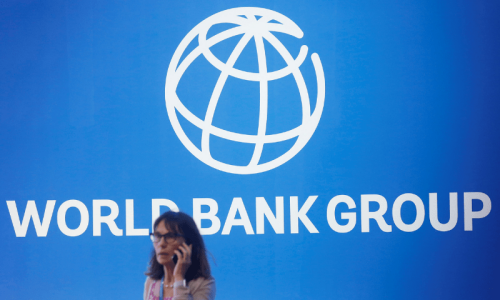
PAKISTAN’S annual GDP growth rate has touched five per cent in 2016-17 after almost a decade. However, it is noteworthy that Pakistan was one of the high economic performers among developing countries over 1960-1990 and had a much higher economic growth than either India or Bangladesh.
Sadly, this is no longer true. Pakistan’s economic growth was over 6pc per annum over the 30 years, 1960-90, which enabled its GDP to grow six-fold and per capita income to grow by 3pc per annum. Since 1990, the GDP growth has declined considerably and has averaged less than 4pc per annum over 2007-17, with per capita income growing less than 2pc per annum.
In contrast, the Indian growth rate has averaged nearly 7pc per annum since 1990 and Bangladesh has enjoyed a growth rate of close to 6pc per annum during the last decade. More importantly, per capita incomes have been growing close to 5pc and nearly 4pc per annum in India and Bangladesh respectively in recent years.
Unless Pakistan is able to revive its annual growth to a sustained 6pc to 7pc per annum, it will not be able to generate jobs needed for it large young population, and, equally important, it could fall even further behind India.
Three areas need focus before robust growth can be achieved.
There are three areas in need of attention and strong policy action before strong and sustained growth can be revived.
First of all, Pakistan savings and investment levels are woefully low. The ratio of gross investment to GDP has averaged 15pc since 2010 and is actually somewhat lower than it was in the previous four decades. In contrast, gross capital formation in India has risen very sharply and has been well above 30pc of GDP during the last decade. The much lower level of investment in Pakistan reflects, in large part, a much lower level of national savings. Pakistan is, and has been, a highly consumption-oriented society.
Improving the security situation, more effective rule of law and better relations with its neighbours especially Afghanistan and India would greatly strengthen faith in the future of Pakistan. It would also help to revive private investment, reduce defence spending and certainly bring down the level of outflow of savings abroad.
Secondly, Pakistan must rectify its neglect of the export sector. There are few cases of rapid economic advance in modern history that have not relied on exports as an engine of growth. In contrast, Pakistan has missed major opportunities to expand its exports, especially manufactured goods exports. In the last quarter century, Pakistan’s share in world manufactured exports declined while India’s share increased more than threefold.
A comprehensive development strategy focused on export diversification, improvements in productivity, education and skills, much better coordination within the government on export issues and much better interface between the government and the private sector will greatly enhance the prospects of higher growth.
Pakistan’s trade with China is very imbalanced at present. There is a large trade balance in favor of China. Influxes of cheap Chinese imports are dampening domestic manufacturing output while exports to China remain small. Pakistan must seek a more balanced relationship considering China’s huge balance of payments surplus and Pakistan’s large deficit.
Third, the persistent lags in human development, compared most of all with India and Bangladesh, are one of weakest aspects of Pakistan’s economic history. More importantly, without a much faster rate of development in educational, skill and literacy levels, future growth will be severely constrained. In the final analysis, skilled and highly educated manpower is the best potential resource for rapid economic growth in the future.
In 2015, the net enrolment at the primary level was 73pc of the age group concerned, as against 99pc for India and 96pc for Bangladesh. The adult literacy ratio in India and Bangladesh in 2015 was 72.2pc and 61.5pc respectively as against 56.4pc in Pakistan.
The neglect of basic education will continue to have consequences for Pakistan’s growth and political stability for the next several decades. Even though the literacy rate has nearly trebled in the last 55 years from some 20pc to 57pc, the number of illiterate persons (10 years or older) also trebled to about 50 million over the same period. The mass of illiterate people threatens to become a major long-term drag on national productivity.
The public allocations for education at 2pc of GDP are woefully inadequate and need to be increased. However, the management of public education is an even bigger problem as the decline in the quality of public education is increasingly forcing parents to opt for the private sector. The problem of poor governance in the education and health sectors cannot be resolved without major devolution of authority to the local governments.
The writer is a former chief economist of the World Bank.
Published in Dawn, June 20th, 2017









































